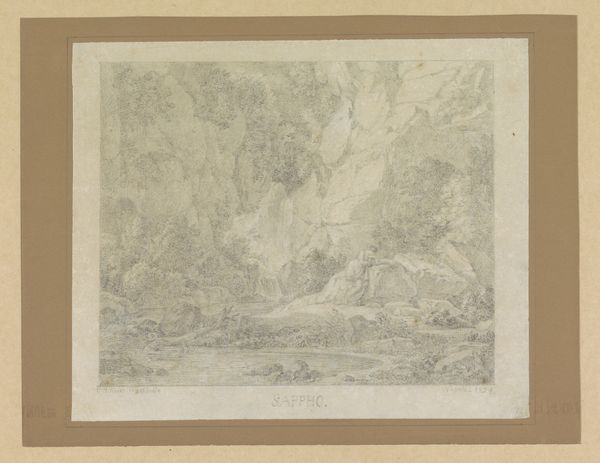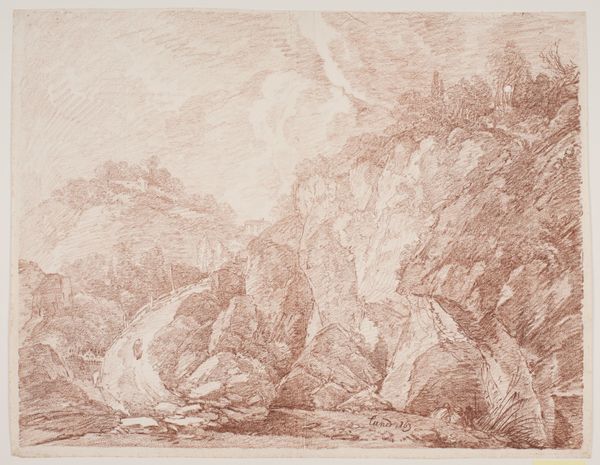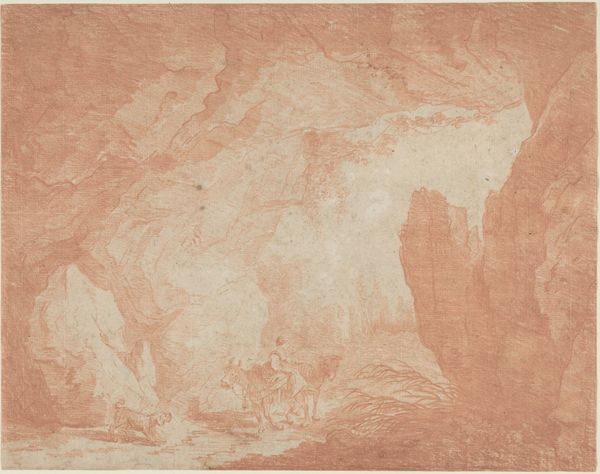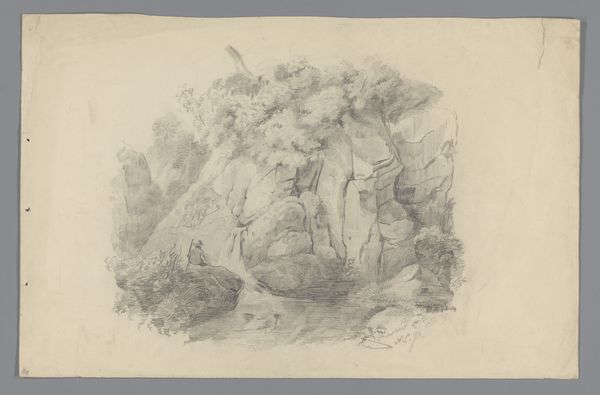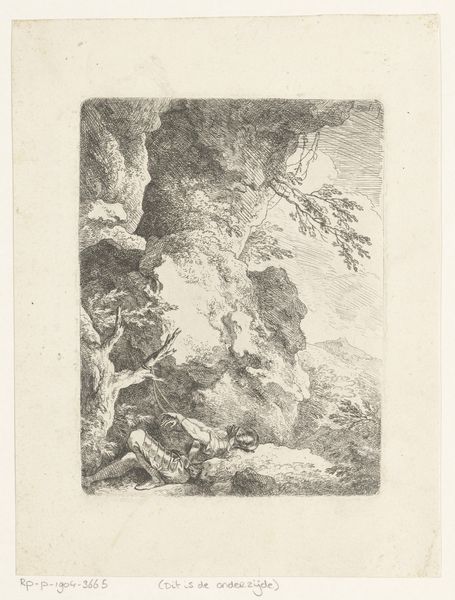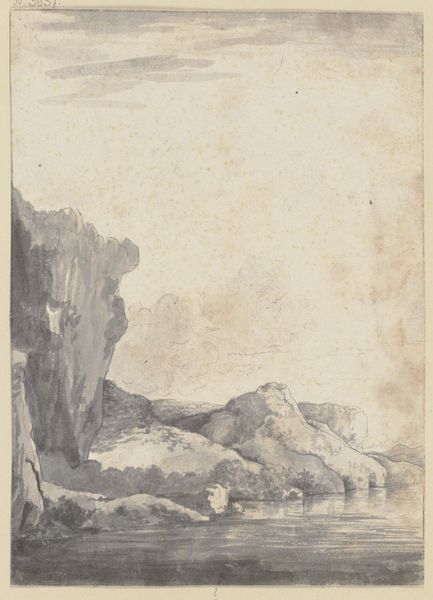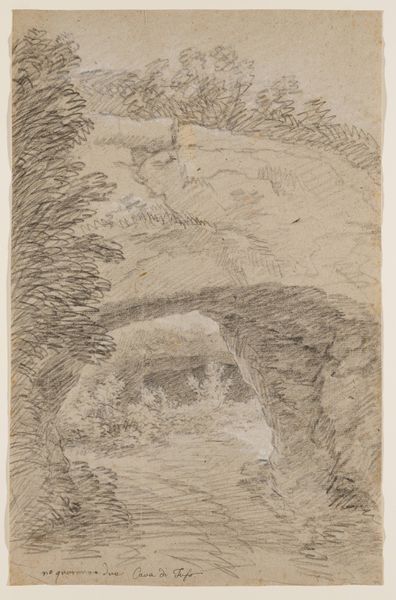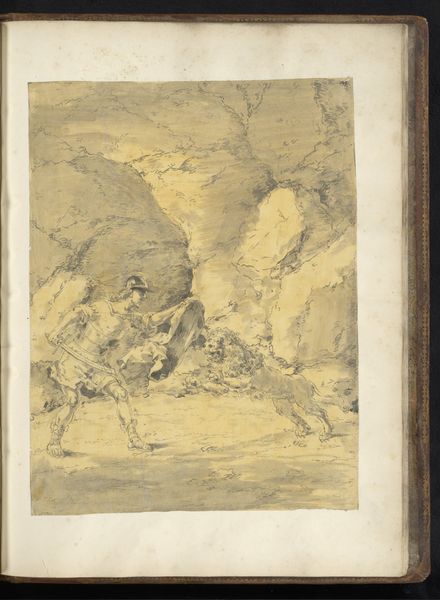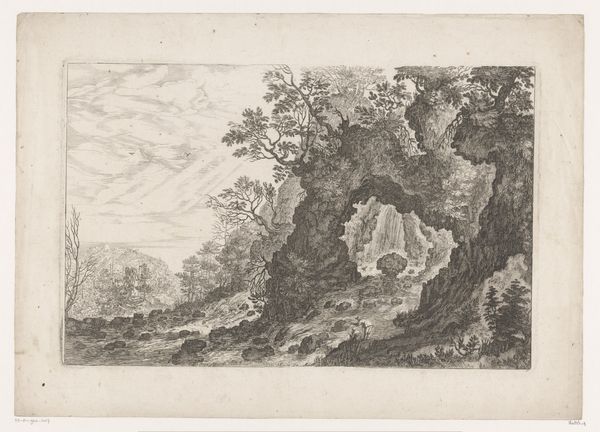
Study of the Side of a Rocky Cliff; Verso: Dam on a Mountain Stream 1600 - 1605
0:00
0:00
drawing, print, watercolor
#
drawing
#
water colours
# print
#
landscape
#
watercolor
#
mountain
#
northern-renaissance
#
watercolor
#
realism
Dimensions: 5 3/8 x 7 in. (13.7 x 17.8 cm)
Copyright: Public Domain
Curator: It possesses a strange melancholy, almost primordial. The scale feels off, as if reality has been subtly twisted. Editor: We're looking at a double-sided watercolor by Paulus Willemsz. van Vianen, likely created between 1600 and 1605. The work is called "Study of the Side of a Rocky Cliff; Verso: Dam on a Mountain Stream," currently held at the Metropolitan Museum of Art. It is one half landscape, one half something bordering on pure abstraction. Curator: Yes, and it draws upon familiar images—rock, stream, foliage—but it renders them alien, almost nightmarish. This reflects humanity’s fractured relationship to the land after the Reformation, where previous harmonies have given way to suspicion. See the dark and shadowed face in the rocks; does it signify watchful authority or primeval indifference? Editor: I agree about that looming face-like quality, but it must also be situated within its artistic environment, Northern Renaissance, after all. These artists sought to objectively render and contain Nature—what symbols or cultural anxieties were then given to stone, light, and water? It is a complex dance between reality and projection, observation and emotion. Curator: Precisely. Observe how the implied textures evoke geological time scales—deep erosions mirroring states of emotional turmoil. But there is a curious asymmetry here, no comforting Vanitas of Dutch painting, no familiar still lives and serene countryside...this work instead reflects humanity alienated from God's world. This rocky visage marks an end of certainty. Editor: It prompts us to question our perceived place in the natural order. It's interesting how technique reinforces that mood of uncertainty; watercolor is, after all, ephemeral by nature and resists hard, certain edges. A printed watercolor such as this even amplifies this impression further—as one must reconcile the precision of mechanical means, with the watery texture we witness here. Curator: The dam is intriguing in this regard. On the back of that cliff face, one reads into these structures with conflicted impressions—they're desperate to change or control wild energies. This captures the tension, not resolved here, that will later find resolution in industrial landscapes and controlled environments. Editor: Thinking about this artwork—its textures, dual-sided nature, and techniques of capturing an image—all are revealing windows into the intersection of artistic style, scientific observation, and social commentary of the time. Curator: For me, this brief journey into the emotional geology of the human psyche has left me unsettled—I will revisit again in contemplation.
Comments
No comments
Be the first to comment and join the conversation on the ultimate creative platform.
